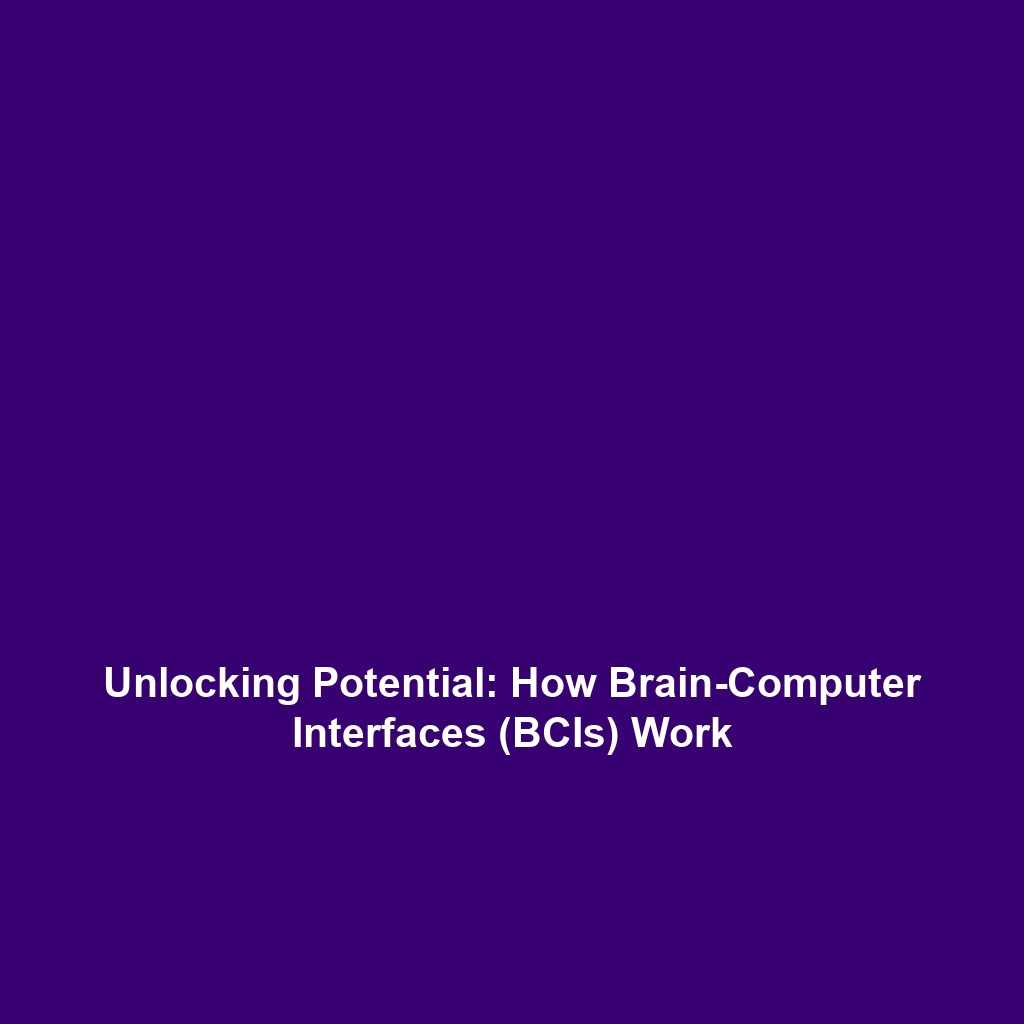History of Brain-Computer Interfaces (BCIs)
The history of Brain-Computer Interfaces (BCIs) is a fascinating journey that reflects the evolution of technology and neuroscience. As a pivotal segment in the realm of Brain-Computer Interfaces, understanding this history sheds light on the significant breakthroughs that have shaped current applications and future innovations in the field. By exploring the timeline and foundational concepts of BCIs, we can appreciate their potential to transform human-computer interaction and enhance various domains such as healthcare, communication, and entertainment.
Key Concepts in the History of BCIs
This exploration begins with several key concepts that are fundamental to grasping the evolution of BCIs:
- Neural Activity Measurement: Early approaches focused on signals produced through neural activities, leading to methods of detection and interpretation.
- Signal Processing and Interface Design: Progression in algorithms and computing has refined how these neural signals are processed and turned into meaningful commands.
- Research Milestones: Significant studies conducted by pioneers in neuroscience and computing have laid essential groundwork for contemporary BCIs.
Applications and Real-World Uses of BCIs
Understanding the history of BCIs provides insights into their practical applications today. Notable applications include:
- Medical Rehabilitation: BCIs are used to aid those with mobility impairments, enabling control of prosthetic limbs or computerized systems.
- Assistive Technologies: For individuals with disabilities, BCIs facilitate communication through systems that read brain signals.
- Neuroscience Research: BCIs contribute to advancements in cognitive neuroscience by allowing scientists to study brain activity in real-time.
Current Challenges in Studying the History of BCIs
Despite their potential, there are persistent challenges in the study and application of BCIs:
- Technical Limitations: Current BCI technology often faces issues with signal noise and accuracy in interpreting brain signals.
- Ethical Considerations: Concerns about privacy and consent surrounding cognitive data remain significant hurdles.
- Accessibility: High costs and complex setups can restrict access for many who could benefit from BCI technologies.
Future Research and Innovations in BCI Technology
The future of BCIs appears promising, with ongoing research and innovations aimed at overcoming current limitations. Some anticipated breakthroughs include:
- Enhanced Signal Processing: Advancements in AI may lead to better algorithms for interpreting neural data.
- Wearable BCIs: Upcoming technologies may allow for less intrusive, more user-friendly devices that enhance usability.
- Brain-Machine Interfaces (BMIs): The convergence of BCIs with machine learning can result in more responsive systems that adapt to individual users.
Conclusion
In summary, the history of Brain-Computer Interfaces is not just a tale of technological advancement; it is a narrative that interweaves science, ethics, and human potential. As we look forward to future innovations, it is crucial to advocate for responsible research and inclusive access to these transformational technologies. For further reading on the advancements in BCIs and their applications, visit our other articles linked below. Stay informed and engaged in the conversation about BCIs!
Click here for more on BCI advancements
